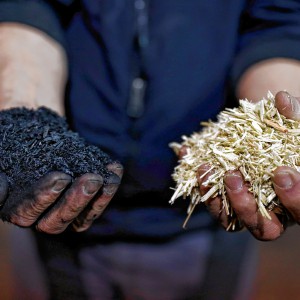Ask a local master gardener: What’s this stuff on my lilacs?
| Published: 05-23-2019 2:45 PM |
Q: I’m starting to get a greyish white powder on my lilac bush’s leaves. Any idea what it might be and what to do about it? —J.R. Easthampton
A: When there is lots of rain, the good news is plants grow like crazy and the bad news is plant diseases also grow like crazy. When I hear the words “greyish” and “powdery” in reference to a leaf condition, I know fungus is likely on the prowl. There are many plant diseases that look similar, but yours sound like it might be a common one named powdery mildew.
Powdery mildew is a group of fungal diseases that occurs on many plants and often presents itself as a white or grey flour-like powder on the leaves. Lilacs commonly get it. I have had a variety of it on my peonies. It develops spores which can spread the fungus both when it rains and when it is dry — oh joy!
When it rains, droplets hitting soil where spores have overwintered can spray the fungus up onto low plant leaves and spread it that way. When it is not raining, but there is high humidity and breezes such as we have experienced on our newly warm days, the mildew spores can spread through the wind. Thankfully, powdery mildew is more unsightly than harmful and rarely kills the plant.
To help control your current powdery mildew, here are a few organic methods to consider. One is sulfur fungicide, available as either a liquid or a powder. Another is neem oil. When using either of these options, read the label and use according to manufacturer’s instructions. A third option often used more as a preventative is milk! Mix 1 part milk with 2 or 3 parts water and spray on both top and bottom of leaves until dripping, repeating every 1 week to 10 days, sooner if it rains.
To help prevent future outbreaks, purchase disease resistant plants and practice good maintenance. If you want a powdery mildew resistant plant, do your research, read the labels at the nursery and ask the staff for assistance in choosing a plant with that particular trait.
Regarding maintenance, look for good airflow between and within plants. If possible, move plants that are too close together. Within a plant, selectively prune overcrowded sections. This helps decrease the humidity around and within the plants.
Article continues after...
Yesterday's Most Read Articles
 Locking up carbon for good: Easthampton inventor’s CO2 removal system turns biomass into biochar
Locking up carbon for good: Easthampton inventor’s CO2 removal system turns biomass into biochar
 Northampton man will go to trial on first-degree murder charge after plea agreement talks break down
Northampton man will go to trial on first-degree murder charge after plea agreement talks break down
 Police report details grisly crime scene in Greenfield
Police report details grisly crime scene in Greenfield
 Area property deed transfers, April 25
Area property deed transfers, April 25
 Advancing water treatment: UMass startup Elateq Inc. wins state grant to deploy new technology
Advancing water treatment: UMass startup Elateq Inc. wins state grant to deploy new technology
 Super defers Amherst middle school principal pick to successor; one finalist says decision is retaliation for lawsuit
Super defers Amherst middle school principal pick to successor; one finalist says decision is retaliation for lawsuit
Also, consistently clean up debris around your plants including spent blossoms, dropped leaves, and any other dead or rotting material. Dispose of all diseased plant material in a trash bag. Do not put it on the compost pile as the fungus can stay present in the pile and cause problems when you use the compost. Remember to wipe your pruners clean with a diluted bleach solution after cutting diseased plant material to help prevent the fungus’ spread.
Good question, J.R. Thanks for asking a (local) master gardener.
Have a gardening dilemma? Please send questions, along with your name/initials and community, to the Western Massachusetts Master Gardener Association at AskAMasterGardener@wmmga.org. One question will be answered per week. wmmga.org

 Valley Bounty: Grass-fed animals that feed the grass: Gwydyr Farm in Southampton focuses on ‘restoring the connection between land, food and people’
Valley Bounty: Grass-fed animals that feed the grass: Gwydyr Farm in Southampton focuses on ‘restoring the connection between land, food and people’ Weekly Food Photo Contest: This week’s winner: Mary Chicoine of Easthampton
Weekly Food Photo Contest: This week’s winner: Mary Chicoine of Easthampton  Speaking of Nature: A romantic evening for two birders — To hear the wonderful sounds of the Saw-whet Owl one must go outside at night
Speaking of Nature: A romantic evening for two birders — To hear the wonderful sounds of the Saw-whet Owl one must go outside at night Speaking of Nature: Where have all the birds gone?: They’re there, and here’s a handy tool to keep track of their appearances
Speaking of Nature: Where have all the birds gone?: They’re there, and here’s a handy tool to keep track of their appearances
